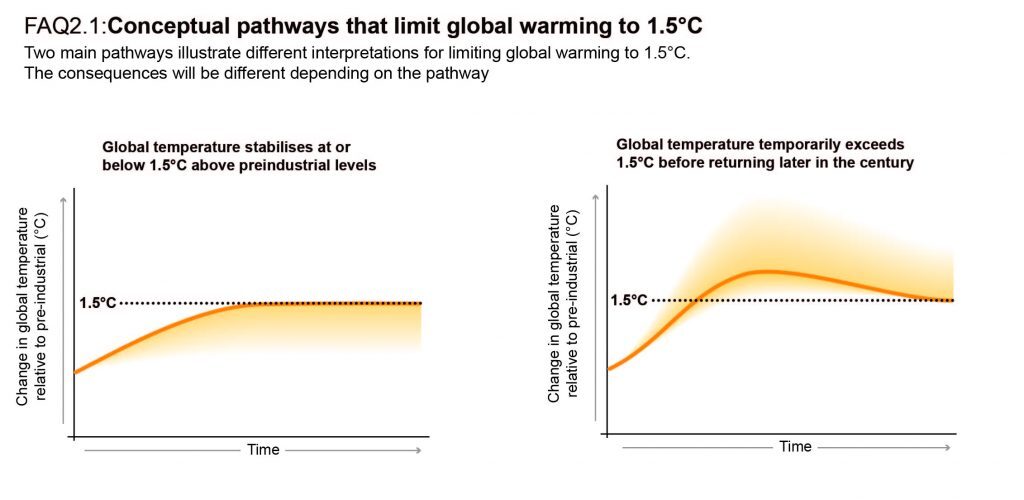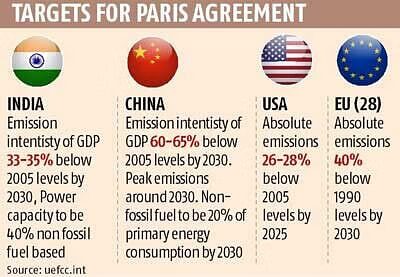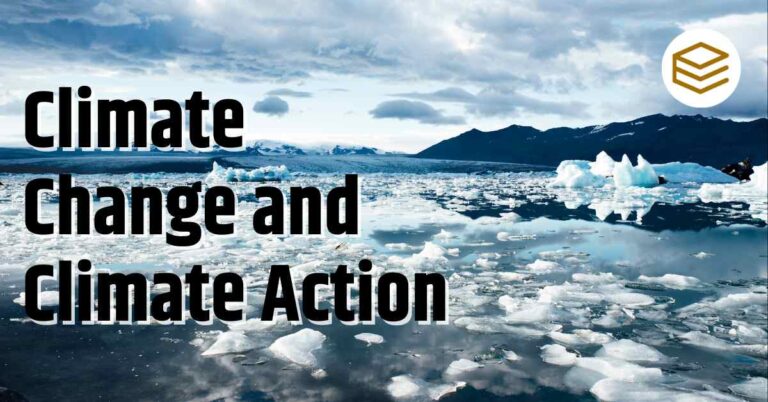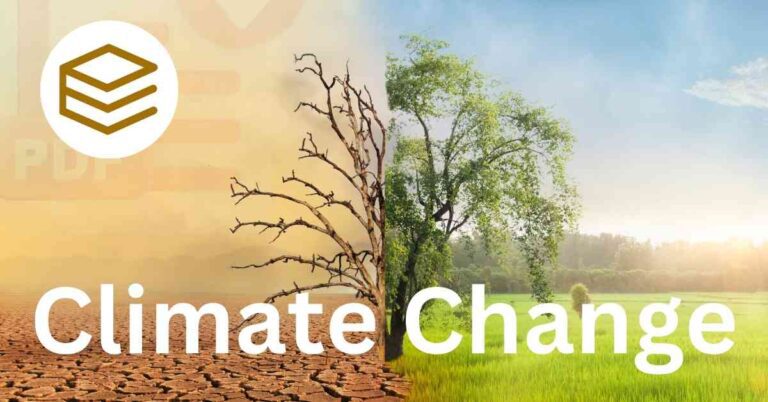October 25, 2025 1:16 am
The Paris Agreement is a landmark international treaty adopted at the 21st Conference of the Parties (COP21) to the United Nations Framework Convention on Climate Change (UNFCCC). The agreement was signed on December 12, 2015, in Paris, France, and entered into force on November 4, 2016. It marked a significant step forward in global efforts to combat climate change, aiming for an inclusive and ambitious climate action plan that involves all nations.
Objective of the Paris Agreement
The primary aim of the Paris Agreement is to limit global warming to well below 2°C above pre-industrial levels, while pursuing efforts to restrict the temperature increase to 1.5°C. This goal is driven by scientific evidence that highlights the catastrophic impacts of global warming beyond 2°C, including rising sea levels, extreme weather events, and biodiversity loss.

Key Features of the Paris Agreement
1. Global Temperature Goal
- The agreement seeks to limit the increase in global average temperature to well below 2°C, with a more ambitious target of 1.5°C. This aim reflects the scientific consensus on the need to avoid the worst impacts of climate change.
- Why 1.5°C?: Studies, such as those by the Intergovernmental Panel on Climate Change (IPCC), show that the difference between 1.5°C and 2°C warming could mean more frequent and severe heatwaves, greater loss of species, and higher sea level rise.
2. Nationally Determined Contributions (NDCs)
- Definition: NDCs are climate action plans submitted by each country outlining how they intend to reduce their greenhouse gas emissions and adapt to climate impacts. Unlike the binding targets of the Kyoto Protocol, the Paris Agreement relies on voluntary and self-determined contributions.
- Review and Update Cycle: Countries are required to submit updated NDCs every five years, with each successive NDC expected to be more ambitious than the previous one, reflecting the principle of “progression”.
- Transparency and Accountability: The Paris Agreement includes a framework for monitoring, reporting, and verification (MRV) of each country’s progress toward its NDCs, ensuring transparency and accountability.
India’s INDC Commitments:
| Commitment | Details |
|---|---|
| 🌱 Reduce Emission Intensity | Reduce emission intensity of GDP by 33-35% by 2030 from 2005 levels. |
| 🌳 Increase Forest Cover | Create an additional carbon sink of 2.5 to 3 billion tons of CO₂ equivalent through forest and tree cover. |
| ☀️ Renewable Energy Goal | Achieve 40% of installed power capacity from non-fossil fuel sources by 2030 with international support. |
| 🚰 Adaptation Measures | Enhance water resource management, improve agricultural practices, and increase disaster resilience. |
| 🤝 Climate Justice and Equity | Emphasize global cooperation and the need for developed countries to lead in climate action. |

3. Climate Finance
- Developed countries committed to mobilizing at least $100 billion per year by 2020 to support climate action in developing countries, particularly for adaptation and mitigation efforts.
- Green Climate Fund (GCF): A mechanism established to channel financial resources from developed to developing nations, aimed at supporting climate-resilient and low-carbon development projects.
Mechanisms and Commitments
1. Mitigation
- Countries are required to take measures to reduce emissions, with a focus on transitioning to renewable energy sources, increasing energy efficiency, and adopting sustainable land-use practices.
- Carbon Neutrality: Many countries have set goals to achieve net-zero emissions by the middle of the 21st century. For instance, the European Union aims to become carbon neutral by 2050.
2. Adaptation
- Recognizing that some climate impacts are unavoidable, the Paris Agreement emphasizes the need for adaptation strategies to protect communities and ecosystems. This includes building climate-resilient infrastructure, improving disaster risk management, and safeguarding food and water security.
- National Adaptation Plans (NAPs): Countries are encouraged to develop and implement NAPs to address climate risks and increase resilience.
3. Loss and Damage
- The Paris Agreement acknowledges the concept of “loss and damage” associated with climate change impacts, such as rising sea levels, hurricanes, and droughts. This includes provisions for financial and technical assistance to countries that are severely affected.
- The Warsaw International Mechanism for Loss and Damage was established to provide support to vulnerable nations, although details on funding mechanisms remain a topic of debate.
Implementation and Compliance
1. Global Stocktake
- Every five years, a Global Stocktake is conducted to assess the collective progress toward achieving the long-term climate goals. The first stocktake is scheduled for 2023.
- Purpose: The stocktake informs countries about the effectiveness of their efforts and encourages them to increase the ambition of their NDCs.
2. Compliance Mechanism
- The Paris Agreement established a Compliance Committee that is facilitative rather than punitive. Its role is to help countries meet their commitments through guidance and support rather than imposing sanctions.
Principles Guiding the Paris Agreement
1. Equity and Climate Justice
- The agreement is based on the principles of equity and common but differentiated responsibilities and respective capabilities (CBDR-RC). This recognizes that while all countries must act against climate change, developed nations have a greater responsibility to lead due to their historical emissions and higher economic capacity.
- Climate Justice: The Paris Agreement emphasizes the need to support vulnerable communities that are disproportionately affected by climate change, even though they have contributed the least to the problem.
2. Inclusivity and Multilateralism
- The agreement is notable for its inclusive approach, involving almost all countries, unlike the Kyoto Protocol, which had a limited scope. This multilateral framework emphasizes cooperation and collective action.
Criticisms and Challenges
1. Voluntary Nature of Commitments
- One of the main criticisms of the Paris Agreement is that the NDCs are non-binding, meaning there are no legal penalties for countries that fail to meet their targets. This reliance on voluntary commitments has raised concerns about the agreement’s effectiveness.
- Ambition Gap: Current NDCs, even if fully implemented, are not sufficient to keep global warming below 2°C, let alone 1.5°C. There is a significant gap between the pledges and the required emissions reductions.
2. Climate Finance Shortfalls
- The commitment to mobilize $100 billion per year by 2020 has faced criticism for not being met in full, and there are ongoing disputes over how to scale up climate finance. Developing countries argue that more support is needed to tackle the impacts of climate change effectively.
- Accountability in Finance: There is also a lack of clarity on how climate finance is tracked and reported, leading to disputes over whether the funds are genuinely new and additional.
3. Loss and Damage Funding
- Developing countries, particularly small island nations and least developed countries, have expressed dissatisfaction with the lack of a dedicated funding mechanism for loss and damage. The absence of concrete financial commitments for addressing irreversible climate impacts remains a contentious issue.
Achievements and Positive Impacts
1. Universal Participation
- The Paris Agreement is the first climate treaty that includes universal participation, with nearly all countries committing to climate action. This represents a major diplomatic success and a significant step forward from the Kyoto Protocol.
- U.S. Re-engagement: The United States, which withdrew from the agreement under the Trump administration, rejoined under President Biden, signaling renewed commitment from one of the world’s largest emitters.
2. Momentum for Renewable Energy
- The agreement has catalyzed a global shift toward renewable energy, with investments in solar, wind, and hydropower surging. Countries are adopting ambitious clean energy targets, contributing to a decline in the cost of renewables and an increase in global capacity.
- Corporate Action: Many corporations have also committed to net-zero goals, aligning their business strategies with the Paris Agreement to reduce their carbon footprint.
Case Studies and Success Stories
1. European Union’s Climate Action
- The EU has been a leader in climate action, adopting policies to reduce emissions by at least 55% by 2030 compared to 1990 levels and aiming for net-zero emissions by 2050. The European Green Deal is a comprehensive plan to achieve these targets, focusing on renewable energy, energy efficiency, and sustainable transport.
2. India’s Role
- India has committed to increasing its share of renewable energy to 40% of its total energy mix by 2030 and has launched ambitious initiatives like the International Solar Alliance (ISA). The country’s focus on solar energy has made it one of the fastest-growing renewable energy markets in the world.
- Forest Conservation: India is also working to enhance its forest cover as a carbon sink, contributing to its climate action goals.
3. Small Island Developing States (SIDS)
- SIDS have been vocal advocates for the 1.5°C target, highlighting the existential threat that climate change poses to their communities. Countries like Tuvalu and the Maldives have used international platforms to push for more ambitious climate action, emphasizing the need for global solidarity.
Paris Agreement vs. Kyoto Protocol
1. Scope and Inclusivity
- Paris Agreement: Involves both developed and developing nations, with universal participation and a focus on voluntary NDCs.
- Kyoto Protocol: Focused primarily on industrialized countries (Annex I) with legally binding targets, excluding major developing economies.
2. Long-Term Vision
- Paris Agreement: Emphasizes long-term goals like carbon neutrality by mid-century and includes mechanisms for continuous improvement through the Global Stocktake.
- Kyoto Protocol: Had short-term, fixed targets for emission reductions over specific commitment periods.
3. Flexibility and Adaptation
- Paris Agreement: Offers flexibility in how countries meet their targets and places equal emphasis on mitigation and adaptation.
- Kyoto Protocol: Primarily focused on emission reductions without as much emphasis on adaptation.

Future Prospects and Outlook
1. Enhancing Ambition
- The upcoming NDC updates and the 2023 Global Stocktake are expected to play a crucial role in determining whether countries will increase their ambition to meet the 1.5°C target.
- Technological Innovation: The development of new technologies, such as carbon capture and storage (CCS) and advancements in renewable energy, will be vital in achieving climate goals.
2. Strengthening Climate Finance
- Discussions on scaling up climate finance are ongoing, with an emphasis on ensuring that funding is accessible to the most vulnerable countries. There is also a focus on private sector investment in climate resilience projects.
3. Addressing Climate Migration
- As climate impacts worsen, the issue of climate-induced migration is becoming more urgent. The Paris Agreement provides a framework for international cooperation to address the needs of displaced populations and improve climate resilience.
Impact of the Paris Agreement on Global Climate Policy
1. Setting a Global Standard for Climate Action
The Paris Agreement has established a universal framework for climate action, engaging both developed and developing countries in the fight against climate change. This inclusivity is a marked shift from previous treaties like the Kyoto Protocol, which only bound industrialized nations. By setting a global temperature goal and urging nations to adopt Nationally Determined Contributions (NDCs), the agreement has created a benchmark for climate policies worldwide.
2. Catalyst for National Climate Policies
The Paris Agreement has prompted countries to enact or strengthen their domestic climate policies. Many nations have integrated their NDC targets into national legislation, aligning their climate goals with sustainable development plans. Examples include:
- European Union: The EU has adopted the European Green Deal, aiming to make Europe the first climate-neutral continent by 2050, with ambitious policies on renewable energy, biodiversity, and a circular economy.
- United States: Under President Biden, the U.S. rejoined the Paris Agreement and announced goals to reduce emissions by 50-52% below 2005 levels by 2030. Policies like the Inflation Reduction Act (2022) aim to accelerate the transition to clean energy.
- China: Committed to achieving carbon neutrality by 2060, China has made significant investments in renewable energy and electric vehicles, influenced by the global standards set by the Paris Agreement.
3. Influence on Subnational and Local Governments
The Paris Agreement has encouraged subnational entities, such as states, cities, and provinces, to take climate action even if their national governments lag behind. Cities like New York, London, and Paris have committed to achieving carbon neutrality through initiatives like increasing public transportation options, banning diesel vehicles, and improving energy efficiency in buildings.
4. Driving Global Collaboration and Climate Diplomacy
The agreement has reinvigorated international climate diplomacy, fostering collaboration through platforms like the UN Climate Action Summit and COP meetings. It has also inspired regional partnerships, such as the African Renewable Energy Initiative (AREI), aimed at expanding renewable energy across Africa.
5. Promoting Climate Resilience and Adaptation
The Paris Agreement’s emphasis on adaptation has influenced global efforts to build resilience against climate impacts. International organizations and governments are prioritizing investments in disaster risk reduction, coastal protection, and climate-smart agriculture. For instance, the Global Commission on Adaptation works to accelerate climate adaptation solutions worldwide.
6. Encouraging Climate Finance and Green Investments
The commitment to mobilize $100 billion annually for climate action in developing countries has spurred green finance initiatives. Financial institutions are increasingly divesting from fossil fuels and investing in renewable energy projects. The rise of green bonds and sustainable finance frameworks has transformed global financial markets, aligning them with climate goals.
Role of Non-State Actors in the Paris Agreement
Non-state actors, including corporations, non-governmental organizations (NGOs), research institutions, and civil society groups, have played a critical role in supporting and accelerating the objectives of the Paris Agreement.
1. Corporate Climate Commitments
Many major corporations have aligned their business strategies with the Paris Agreement by setting science-based targets to reduce emissions. Examples include:
- Amazon: Launched the Climate Pledge, committing to achieving net-zero carbon emissions by 2040 and urging other companies to follow suit.
- Microsoft: Committed to becoming carbon negative by 2030 and pledged to remove all the carbon it has emitted since its founding in 1975.
- Unilever: Implemented a comprehensive climate action plan, including sourcing 100% of its energy from renewable sources and making its supply chain carbon-neutral.
Impact: These commitments drive innovation, accelerate the adoption of clean technologies, and influence supply chains to become more sustainable. Companies are also investing in carbon offset projects and adopting circular economy practices.
2. Cities and Local Governments
Cities have emerged as powerful players in climate action, often setting more ambitious goals than national governments. Networks like C40 Cities and the Global Covenant of Mayors bring together cities to share best practices and collaborate on climate solutions.
- C40 Cities: A network of megacities committed to addressing climate change, with members implementing policies to reduce emissions, such as promoting electric vehicles and creating more green spaces.
- ICLEI – Local Governments for Sustainability: An international association that supports local governments in becoming more sustainable and resilient to climate impacts.
Initiatives: Cities are developing climate action plans that include measures like improving energy efficiency, reducing waste, and increasing urban greenery. These actions collectively have a significant impact on global emissions.
3. NGOs and Civil Society
NGOs have been instrumental in advocating for stronger climate action and holding governments accountable for their commitments. They engage in:
- Awareness Campaigns: Organizations like Greenpeace and 350.org run global campaigns to raise awareness about climate change and push for fossil fuel divestment.
- Litigation and Legal Action: NGOs have taken legal action against governments and corporations for failing to act on climate change. Notable cases include the Urgenda lawsuit in the Netherlands, where a court ordered the government to reduce emissions more aggressively.
Community-Based Projects: NGOs also work at the grassroots level, implementing projects that promote sustainable agriculture, forest conservation, and renewable energy in vulnerable communities.
4. Scientific and Research Institutions
Research organizations and academic institutions provide the scientific basis for climate policies. They conduct climate modeling, publish reports, and advise governments on effective strategies.
- IPCC Reports: The Intergovernmental Panel on Climate Change (IPCC) continues to publish comprehensive reports on climate science, which are critical for shaping global climate policy and informing NDC updates.
- Climate Labs and Think Tanks: Institutions like the Rocky Mountain Institute (RMI) and World Resources Institute (WRI) develop innovative solutions and provide technical support for climate projects.
5. Youth Movements and Activism
Youth climate activists, inspired by movements like Fridays for Future, led by Greta Thunberg, have amplified the urgency of climate action. They organize global climate strikes, advocate for ambitious policies, and raise awareness about the climate crisis.
- Youth-Led Organizations: Groups like Sunrise Movement in the United States and Extinction Rebellion globally push for systemic change, emphasizing the need for immediate and bold climate action.
Impact: Youth activism has pressured governments to commit to more aggressive climate targets and has brought climate change to the forefront of political and social discussions.
Non-State Actors Driving Climate Innovation
1. Technology and Renewable Energy Companies
- Tesla: A pioneer in electric vehicles (EVs) and renewable energy storage solutions, Tesla has accelerated the transition to sustainable energy by popularizing EVs and investing in battery technology.
- NextEra Energy: The largest producer of wind and solar energy in the world, NextEra is driving the global shift away from fossil fuels by expanding renewable energy infrastructure.
Role in Energy Transition: These companies are making clean energy more accessible and affordable, helping to decarbonize the energy sector in line with the goals of the Paris Agreement.
2. Financial Institutions and Investors
The finance sector is playing an increasingly important role in climate action. Banks, investment firms, and pension funds are committing to net-zero investment portfolios and actively supporting green finance initiatives.
- Net-Zero Asset Owner Alliance: A group of institutional investors managing trillions of dollars in assets committed to transitioning their portfolios to net-zero emissions by 2050.
- Green Bonds: Financial instruments used to fund projects with positive environmental impacts. The issuance of green bonds has surged since the Paris Agreement, financing renewable energy, energy efficiency, and clean transportation projects.
Divestment Movement: Many investors are divesting from fossil fuels, driven by campaigns from environmental groups and the recognition of climate risks to financial stability.
Conclusion: The Paris Agreement’s Transformative Impact
The Paris Agreement has fundamentally changed the landscape of global climate governance. By fostering collaboration among nations, mobilizing finance, and empowering non-state actors, it has created a multi-level approach to tackling climate change. However, the challenge remains to bridge the ambition gap and accelerate the transition to a low-carbon economy.
Exam Preparation Tips for the Paris Agreement:
- Memorize Key Dates: Remember the adoption date (2015) and entry into force (2016), as well as the Global Stocktake timeline (every five years).
- Understand the NDC Framework: Be familiar with how NDCs work, the review process, and the concept of increasing ambition.
- Know the Financial Commitments: Highlight the $100 billion climate finance goal and the role of the Green Climate Fund.
- Compare with the Kyoto Protocol: Be ready to discuss the differences and advancements, especially in terms of scope, inclusivity, and long-term goals.
- Use Real-World Examples: Refer to case studies, such as India’s solar energy initiatives or the EU’s Green Deal, to illustrate the impact of the Paris Agreement.
Source : UNFCCC



